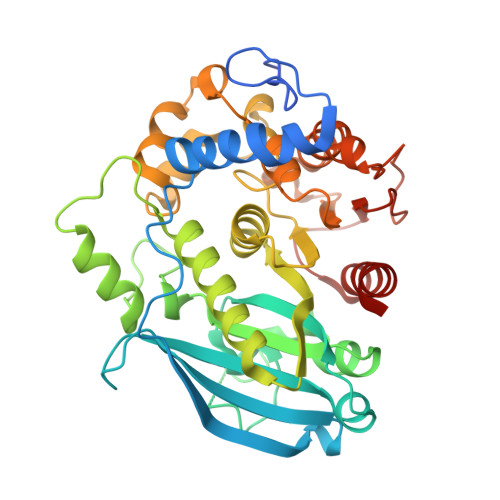Mechanism and biomass association of glucuronoyl esterase: an alpha / beta hydrolase with potential in biomass conversion.
Zong, Z., Mazurkewich, S., Pereira, C.S., Fu, H., Cai, W., Shao, X., Skaf, M.S., Larsbrink, J., Lo Leggio, L.(2022) Nat Commun 13: 1449-1449
- PubMed: 35304453
- DOI: https://doi.org/10.1038/s41467-022-28938-w
- Primary Citation of Related Structures:
7B7H - PubMed Abstract:
Glucuronoyl esterases (GEs) are ¦Á/¦Â serine hydrolases and a relatively new addition in the toolbox to reduce the recalcitrance of lignocellulose, the biggest obstacle in cost-effective utilization of this important renewable resource. While biochemical and structural characterization of GEs have progressed greatly recently, there have yet been no mechanistic studies shedding light onto the rate-limiting steps relevant for biomass conversion. The bacterial GE OtCE15A possesses a classical yet distinctive catalytic machinery, with easily identifiable catalytic Ser/His completed by two acidic residues (Glu and Asp) rather than one as in the classical triad, and an Arg side chain participating in the oxyanion hole. By QM/MM calculations, we identified deacylation as the decisive step in catalysis, and quantified the role of Asp, Glu and Arg, showing the latter to be particularly important. The results agree well with experimental and structural data. We further calculated the free-energy barrier of post-catalysis dissociation from a complex natural substrate, suggesting that in industrial settings non-catalytic processes may constitute the rate-limiting step, and pointing to future directions for enzyme engineering in biomass utilization.
Organizational Affiliation:
Department of Chemistry, University of Copenhagen, DK-2100, Copenhagen, Denmark.



















